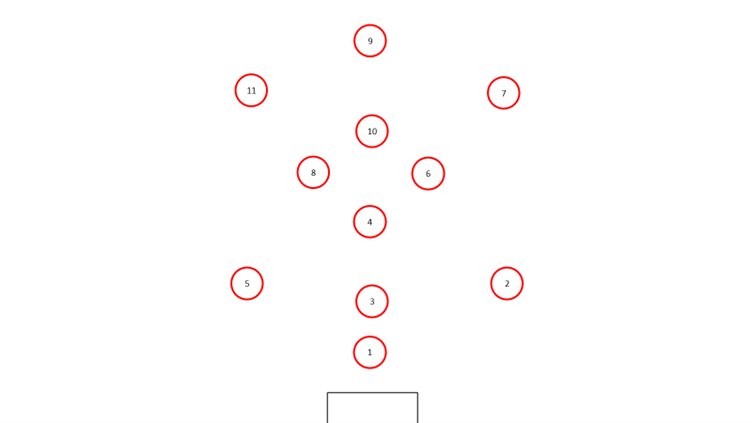A pillar of the systems approach to management is acquiring a holistic view of an organisation so resources can be optimally deployed and managed to achieve stated objectives. While normally associated with business management, the world of professional football is not alien to the concept.
In the 2018/2019 European season, a team primarily composed of players nurtured in Ajax Amsterdam’s youth system progressed to the semi-finals of the UEFA Champions League, the continent’s premier competition. Given the financial disparity between Ajax and other major European clubs – Ajax rarely ranks among the continent’s top 30 in terms of spending power – the 2018/2019 represented significant over performance and exceptional return on investment in regards to its player development system.
The Netherland’s most awarded club, Ajax’s domestic and more recent European successes – foreshadowed by the club’s 1995 European Cup triumph – is based on its reliance on core concepts of a systems approach to management that manifest in how it develops young footballers and the club’s tactical approach on the field.
As noted, the systems approach to management emphasises assessing a firm in totality so that it can be optimally organised and deployed to achieve an organisation’s objectives. Boiled down to its essential points, a systems approach to management is exhibited by, among others:
- Adopting a project management methodology and using it consistently
- Implementing a philosophy that drives the company towards project management maturity and communicate it to everyone
- Committing to developing effective plans at the beginning of each project
- Cultivating effective communication, cooperation, and trust to achieve rapid project management maturity
- Focus on identifying and solving problems early, quickly, and cost effectively
- Measuring progress periodically
The importance of a systems management approach does not just apply to organisations orientated towards providing a specific product or service, but is exercised in other industry types, with Ajax’s youth development system no different.
Continuity, communication and measurement
Ajax’s youth development system emphasises continuity, reflective of the importance of consistency within a systems management approach. The system is rigorous by design, with it critical that players enter the system from a young age, as players find it increasingly difficult to adapt to the club’s needs the older they get. This understanding has been shown by the likes Louis van Gaal, coach of the 1995 team and a doyen of Ajax’s approach, who preferred working with younger players over the course of his managerial career because they are easier to mould. All stakeholders associated with the youth system understand in detail the club’s approach and the importance of pulling in the same direction.
An example is the club’s approach to player parents. Great care is taken to communicate with these vital stakeholders to ensure they communicate the same message and information to the player as the club. This stops players from receiving contradictory inputs of the same events, which inhibits their development as they are taking in the information best designed to aid their growth.
This approach reflects the importance of a project management methodology and using it consistently.
Every year, two reports are produced for each player, covering the first and second halves of the year. The findings are discussed with the player and their parents, with the report assessing several categories that cover physical and mental ability, and personal characteristics.
These reports then form the basis of a further analysis that seeks to highlight the player’s strengths and weaknesses. This analysis is anchored by Ajax’s TIPS system, which stands for technique, insight and intelligence, personality and speed.
Of these four criteria, Ajax’s scouts – with the lead scout being the most influential person within the entire programme – place the greatest emphasis on I, P and S. This is because T – technique – can always be taught while the other categories are more heavily weighted towards raw ingredients inherently found in each player that cannot be coached.
The TIPS system and the reports that comprise it is reflective of the programme targeting achievable objectives, being focused upon effective plans at a project’s start (with each player representing an individual project), identifying and solving problems early, and emphasising high quality communication, cooperation and trust to achieve rapid maturity.
Coherent development and Total Football-defined playing system
Players enter Ajax’s youth development system and progress through the club’s representative teams with the first team being the ultimate destination. Each team within the Ajax pyramid, from top to bottom, plays to a pre-defined blueprint, in the same way, using the same formation and squad composition. This formation and way of playing is philosophically rooted in the concept of Total Football. In every 11-person team that represents Ajax at any level, the same playing numbers are used per a position, with specific duties assigned to each number.

The team formation Ajax Amsterdam applies across all teams, from age-group level to its senior team
This means that regardless of the opponent and how long an Ajax player has been in their respective team, the system of play is inherently familiar tactically and strategically. Transitioning between age groups becomes seamless, with the only differentiator being that player’s abilities and personality, which have already been assessed and measured from a young age on a regular basis. This type of succession planning is further emphasised by each player within the youth system being required to know who the first team player is in their position, with that player their role model.
In addition, all Ajax youth players train in every position up to the age of 15 or 16, at which point they are assigned to their set position within the Ajax system. Even though players become specialists, their intimate familiarity with each position’s role within the broader system promotes an inherent level of cohesion, a core tenet of Total Football. It allows players to interchange among one another when the moment demands it, building tactical redundancy during a game if one player is out of position.
Much like Ajax’s player development programme, Total Football exhibits hallmarks of the systems approach to management: optimal resource utilisation through the control of space and player position fluidity, and treating the team as a holistic “organisation” where changes in one area effect another.
As much as players are required to conform to Ajax’s systems, so are coaches of the club’s different teams. They must operate according to the same parameters, with each receiving a limited amount of freedom, so long as it aligns to the playing principles that defines Ajax’s style of play. The coach of the eight to 10-year-old team is considered to play as important a role in the system as the coach of 16 to 18-year-old team, given how at each level the same principles must be stressed for the system to function as optimally as possible.
These structures emphasise the importance of selectin the correct person to manage a project (age group coaches), and most critically as reflected throughout the club’s youth development system, adhering to a philosophy that drives the entire organisation forward towards project management maturity and communicating this philosophy to everyone.
A disadvantage of the systems approach to management weighted against potential success
There are disadvantages to Ajax’s system, where players of potential may be excluded based on pre-determined factors and opponents being aware of the team’s general style of play, the sustained success the club has enjoyed is evidence of the benefits of adopting a a systems management approach throughout the club, top to bottom. Also, while opponents may have an understanding of how Ajax will play, stopping that system being effective is a separate question altogether.
The effectiveness of a systems management approach is that an organisation can approach its work in a systematic and coherent way that holistically utilises people and resources in optimal ways that promote that organisation’s goals. While the shape and type of goals an organisation seeks to achieve will be determined by its industry, their attempts to be successful are encouraged by a system and processes that bring order and efficiency.
As managers seek to bring order and efficiency to their organisations, considering their organisation as a single system with interlinked parts can prove instructive in finding optimal ways of work.
To learn how Letsema can assist you and your organisation to apply new ways of thinking to create efficiencies, cut costs and catalyse growth, email info@letsema.co.za or explore our Consulting services for more information.









